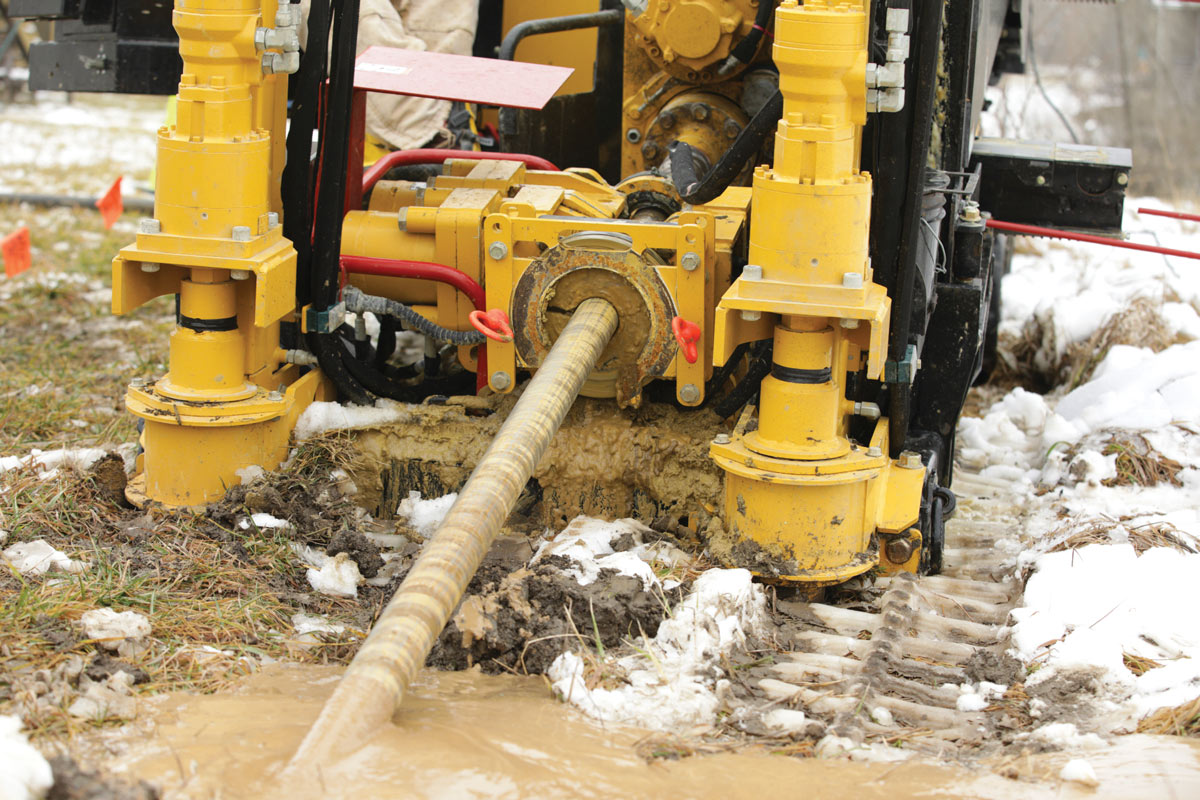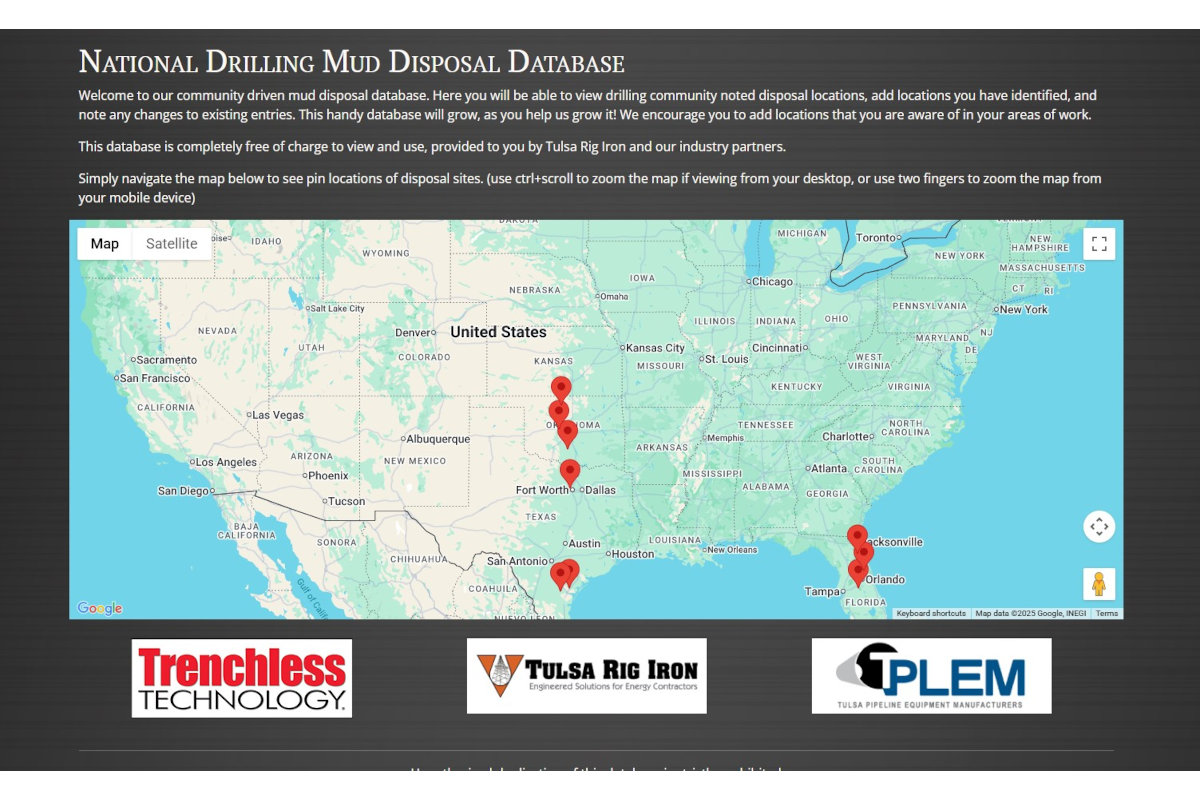Missouri HDD Contractor
July 20, 2011
 Jim Shippen, owner and president of Shippen Construction Co., headquartered in Trenton, Mo., is optimistic. Having survived the dark days of an economic downturn, Shippen is beginning to feel some warmth generated by increasing rays of light that appear to be originating from the American Recovery and Reinvestment Act of 2009.
Jim Shippen, owner and president of Shippen Construction Co., headquartered in Trenton, Mo., is optimistic. Having survived the dark days of an economic downturn, Shippen is beginning to feel some warmth generated by increasing rays of light that appear to be originating from the American Recovery and Reinvestment Act of 2009. “It’s starting to come back, I believe,” Shippen says. “The amount of work following the stimulus dollars has taken a long time to come through, but we are finally starting to see the number of jobs and bidding contracts increase. Prices are still somewhat depressed, but at least there seems to be work for us to chase; and surprisingly, a lot of it is coming from within the telecom industry. Barring another disaster, I’d say telecom, in the next two or three years, should be good.”
Shippen has been involved in the infrastructure installation business since 1975, when a local company brought him on board after he attended college. Shippen worked for various contractors until 1995 when he took the leap of faith and started a business of his own.
Today, Shippen Construction has 20 employees and still focuses primarily on HDD and tends to specialize in telecommunications work. He is licensed in eight states and has worked in others that don’t require individual state licenses for outside contractors and makes a point to seek jobs in southern states so he can keep his Midwestern crew busy with work the year round.
Shippen and company recently traveled south from their north-central Missouri home to tackle a significant fiber backbone line installation job after longtime customer and project owner Telepak Networks, a broadband telecommunications provider based in Ridgeland, Miss., extended an invitation for him to bid the project. A backbone is a set of paths or “loops” that local or regional networks connect to for long-distance interconnection. The job also involved connecting several cellular towers along the route, helping to further the 4G network access for Telepak cell phone subscribers.
After being awarded the job, the next step was to finalize specifics of mapping out the route — including pinpointing equipment staging sites — and coordinating with all the utilities to get each of the existing lines located. Shippen knew that to meet the aggressive completion schedule as specified in the project plan, he would need equipment that was fast, dependable and durable. So he dispatched a trio of Vermeer D24x40 Series II drills to the site, along with corresponding vacuum excavation and support equipment.
Originating near Saltillo, Miss., and ending in Corinth, Miss., the project spanned precisely 47.2 miles and involved installing two 1 1/4-in. HDPE inner-ducts; one to carry a 144 ct. fiber optic cable, and the other installed as a spare in the event that an additional fiber line should be required at some future point. Hand-holes were set every 2,500 to 3,000 ft apart and the soil conditions varied from clay to hard compact soils and a clay/sand mixture.
“It wasn’t rock, but rather very dense clay that slowed us down in some areas,” Shippen recalls. “The rest of the long stretch was a variation of clay along with some sand in low lying areas and near creek and river beds. These variations forced us to run plenty of bentonite.”
With the drill plan mapped, utilities located and soil sampling completed, Shippen’s crew was eager to start drilling. The plan specified using two drills — with occasional supplemental assistance of a third — positioned within a couple miles of each other to complete the bulk of the drilling, using standard drill heads equipped with power point bits; tooling that had previously proven effective in navigating the variation of heavy clay composition soils. According to Shippen, the third drill was employed for about 25 of the 45-day drill span.
Lengths of the individual bores varied from 500 to 1,600 ft, depending on where turns and adjustments needed to be made to connect with the many cell towers positioned along the route. Average drilling depth was approximately 6 to 7 ft, with an occasional dip down to 15 ft to avoid contact with sewer lines and other utilities located in and around urban areas.
“We positioned each drill so we were able to connect a subsequent bore with the one completed behind it,” Shippen explains. “We tried to lay out 1,500 to 2,000 ft between drills and left a tie-in so we could pull right back in underground without having to reposition. That saved a lot of time.”
Once the entire 47.2-mile bore was completed, Shippen’s crew returned later to blow in the 249,200 ft of 144 ct. fiber-optic cable. While the distance alone is quite impressive considering every foot was installed using HDD, the even more amazing feat is that the drilling portion of the job was completed in 45 days.
“We averaged about 5,000 ft per day, but I recall one day where we were able to knock out 8,500 ft,” Shippen says.
In closing, Shippen offers some tips for other contractors who may be considering bidding a similar trenchless job or at least one that spans an underground distance of this length.
“Plan ahead,” he says, “and make sure the final plan includes contingencies for the unexpected. We were fortunate with this job that nothing really unexpected threw us a curve. But as any contractor will tell you, a job like this, when all goes according to plan, is more the exception than the rule. Plus, it helps having an experienced, competent project supervisor and drill operators that know what they’re doing. I may be somewhat partial, but Shippen Construction has some of the best in the business.”
Randy Happel is a features writer for Two Rivers Marketing, Des Moines, Iowa.




